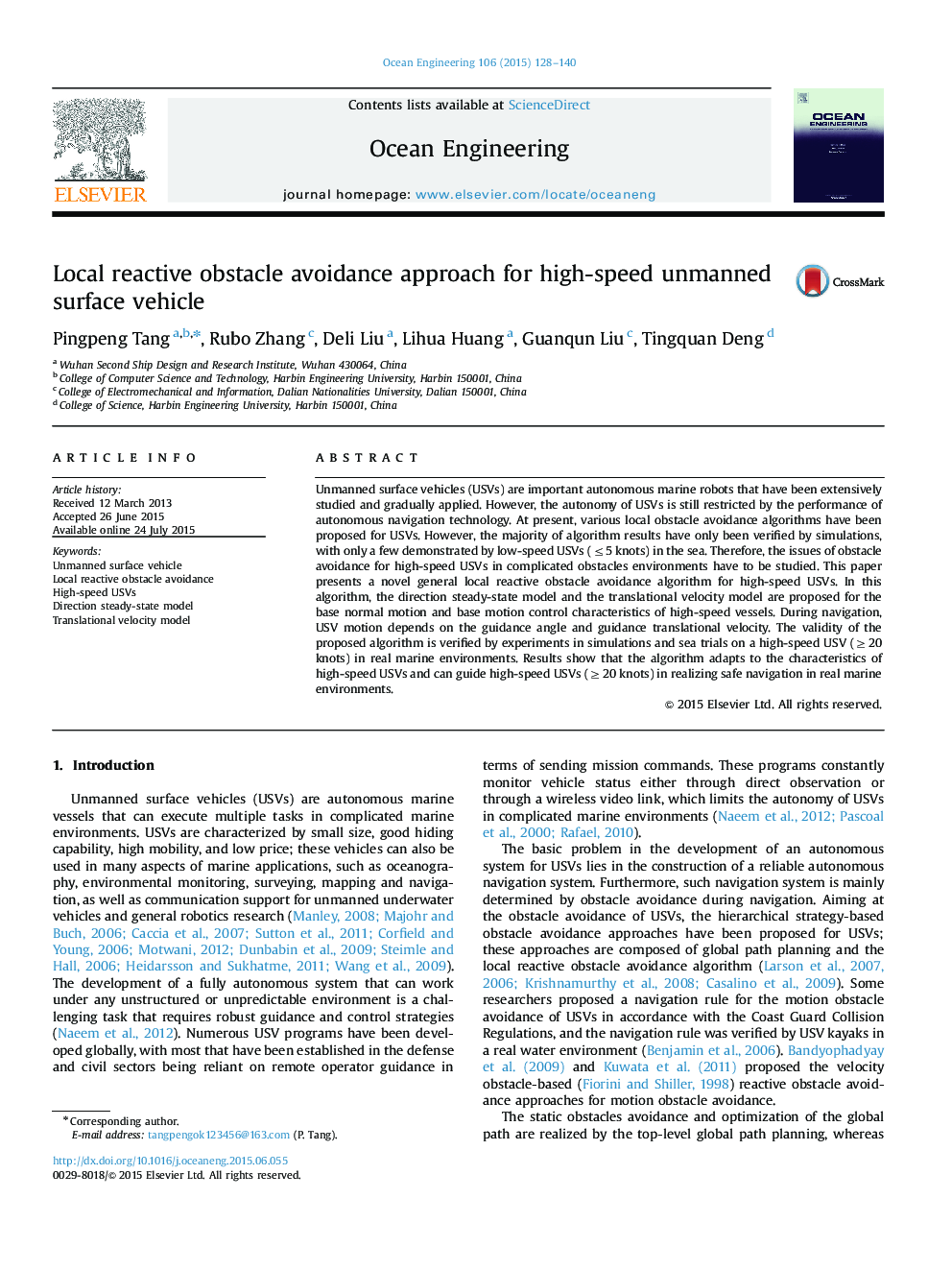| Article ID | Journal | Published Year | Pages | File Type |
|---|---|---|---|---|
| 1725252 | Ocean Engineering | 2015 | 13 Pages |
•A local reactive obstacle avoidance algorithm is proposed for the high-speed USV.•The related characteristics of USV are considered during the algorithm design.•The algorithm was verified by the real-boat high-speed USV in the sea.•In the sea trial, USV can realize the obstacle avoidance at high speed (≥20≥20 knots).
Unmanned surface vehicles (USVs) are important autonomous marine robots that have been extensively studied and gradually applied. However, the autonomy of USVs is still restricted by the performance of autonomous navigation technology. At present, various local obstacle avoidance algorithms have been proposed for USVs. However, the majority of algorithm results have only been verified by simulations, with only a few demonstrated by low-speed USVs (≤5≤5 knots) in the sea. Therefore, the issues of obstacle avoidance for high-speed USVs in complicated obstacles environments have to be studied. This paper presents a novel general local reactive obstacle avoidance algorithm for high-speed USVs. In this algorithm, the direction steady-state model and the translational velocity model are proposed for the base normal motion and base motion control characteristics of high-speed vessels. During navigation, USV motion depends on the guidance angle and guidance translational velocity. The validity of the proposed algorithm is verified by experiments in simulations and sea trials on a high-speed USV (≥20≥20 knots) in real marine environments. Results show that the algorithm adapts to the characteristics of high-speed USVs and can guide high-speed USVs (≥20≥20 knots) in realizing safe navigation in real marine environments.
